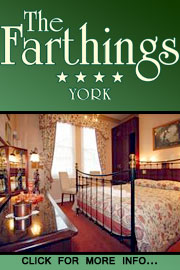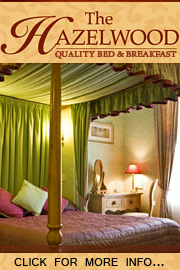York's History
INSIDE YORK - a wealth of history, all within walking distance
It is possible that no other city in the world has such a varied and rich history within such a small area.
Only a small percentage of York's archaeological treasures have been
excavated, yet experts agree that almost wherever you dig here, you are
guaranteed to find something of interest.
Some of the finds have become exhibits in the museums of York and
indeed the rest of the world but there is nowhere near enough room to
put anything but a fraction of them on display.
York has been so strategically important over the
years to so many different peoples, that layer upon layer of history
has accumulated to create the city that you now see today.

Above: A Viking warrior at Clifford's Tower
|
Evidence of human activity in the York area goes back to the Old Stone Age, with exhibits from the period on display at the Yorkshire Museum. Here, you can also see items from later Celtic times, right the way up to the 17th Century AD. The city of York itself was founded by the Romans in AD71. They built a fortress at the junction of the river Foss and the river Ouse, figuring that the site would be easily defendable. They called the Fortress 'Eboracum' and during their 400 years of occupation, the Romans built up a town around it which became the capital of one of the two provinces into which they divided Britain. |
|
Later, the Vikings also chose the city, which they called 'Jorvik', as their most important town, and built it up into an internationally significant trading centre. The name 'York' is derived from the Viking 'Jorvik'. Tens of thousands of archaeological finds have been discovered from the Viking period, which can now be seen by modern visitors at the Jorvik Viking Centre in Coppergate, as well as the Yorkshire Museum itself. |
|
The Norman French invaders laid waste to much of Yorkshire and burnt the city of York to the ground, but they too realised that the place had strategic importance, so they built two castles and established churches, chapels and hospitals. They also founded St. Mary's Abbey, the remains of which can be found in the Yorkshire Museum Gardens and even in the basement of the museum itself. |
|||
|
|||
|
|
|||
|
|||
|
|






